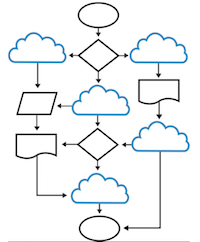How Do You Build Holding Ponds? - Finance Leaders Respond

In a number of recent CFO.You newsletters, subscribers replied to our themes with some learning filled responses.
A big thank you to the Contributors. Enjoy their lessons.
There are a number of holding ponds behind our home that channel the water from our neighborhood to a small creek that eventually flows into the Columbia River. The system made me think about how we build “holding ponds” in our businesses to regulate the flow of work and prevent the damage “flooding” can do to our business. AFT activities are full of deluges; preparing the forecast, refinancing our bank loan, preparing the annual plan, closing the books followed by preparing the Board Pack, tax reporting, issuing payroll, managing the annual audit and the list goes on.
We asked the following and, again, received some great responses to learn from:
Please share a story of how you created “holding ponds” in your Accounting, Finance and Treasury pillars to regulate the flow of work and prevent the damage “flooding” can do to our business.
Ian Hamilton, Chief Financial Officer
One case really stands out for me. The company I was working for performed the carve out audit for the division where I was a Director and lead finance person. We had over 10,000 audit samples and distributed over multiple countries and product lines, in the division I was responsible for. My “holding pond” SharePoint was to monitor the input of requests to the output of replies. If there was a bottleneck due to say a large tender being worked on, then my response was to re allocate people resources around the countries as needed or request a soft month end close from Corporate.
Some days the “holding pond” we needed seemed more like the size of the Pacific Ocean!
It really came down to my mentoring of the controllers and their time spent with their direct reports, so rather than just having 16 Controllers (my direct reports) I had almost 60 highly experienced people available in my resource pool.
Regarding soft close - for us it meant closing all transactional ledgers earlier than the defined timelines. Even though they were not complete, all consolidating entries were made. IC AP/AR were plugged for any differences and generally no top side entries were recorded and limited commentary was provided by myself. This could not apply to quarter end being part of the SEC listed company.
Peter Andrisin, Founder, Dozen
Our “holding ponds” solutions are simple:
· “TWINS” – every KEY position has its Twin person able to take over the job in case of overwork, incident or any other surprise. This Point requires detailed process identification and process description. There are WORK INSTRUCTIONS for each process and/ or position used as training material and JOB AID which is a brief from the WORK INSTRUCTIONS.
The TWINS are organized in cascade: THE CRITICAL PROCESSES – MUST HAVE PROCESSES – IMPORTANT PROCESSES – CAN WAIT PROCESSES. In case of incident, people working on “can wait processes” are moved to important, people from important are moved to must have and people from must have are moved to critical processes execution.
The most important success factor is the training – once every two weeks all staff is MOVED to their twin role to train and practice their backup function.
· “SHUTTLE STAFF” – each process and / or department has permanent staff and SHUTTLE STAFF. SHUTTLE STAFF is very often university students gaining work practice, learning the business and earning money. We have a position allocated to SHUTTLE STAFF. There are 2-4 people assigned to the one chair. 1st person works on Monday and Wednesday, 2nd on Tuesday and Friday, 3rd on Thursday or upon their agreement. We don´t care how they manage their time, we just expect to have chair occupied during the regular working hours. Simple: we have 10 positions = chairs allocated to SHUTTLE staff, while we have 30 people available to work on these chairs. In case of high volume or unexpected situation, the SHUTTLE STAFF may come immediately to manage the extreme workload. They may work either on 2nd or 3rd shift or they can work on the training computers we can easily reroute to production version. We don ´t waste money for permanent staff as we pay just for work done.
· “CAPACITY INSTEAD OF AVERAGE” – we measure staff capacity, not their average production. Example:
Average: 5 FTEs process the following volume: MON – 125 docs, TUE – 50, WED – 100, THU – 75, FRI – 50; total in week: 400; average per person: 80 per week or 16 docs per day. For volume of 500 docs per week we have to hire new FTE.
Capacity: (the same volume). On Monday the team didn´t work overtime, therefore their capacity is 25 docs per person per day. For volume of 500 docs a week they need just 4 (!!!!) FTEs.
Of course, an effective motivation scheme must be in place – in our case we split 1 FTE saved salary between 50% team and 50% company. Half of the team bonus is paid in cash, second half is cumulated in the bank and used for trip upon team choice (e.g. Thursday – Sunday in Paris all inclusive).

I´m sure there are more effective “holding ponds”. I just highlighted those we considered as essential for our success. Our concept is proven by fact, that we didn´t miss any deadline from our fault (twice we missed the deadline due to electricity outage without client disappointment; when we found in the morning we are not able to meet the deadline at 12:00, we always immediately informed the client about the situation, about actions taken – either just short delay or Business Continuity Action with expected time for work submission.)
Sudheendra Rao, Finance Executive
Yes, we used to call it ‘holding reserves’ for future. In my first corporate job we were flooded with projects & revenues and my boss found several ways to hold the money in the business entity in anticipation for future scarcity of resources. Thus, the reserves earned in the first two years of the business lasted an extra 3 years when business was in trouble. There is a so much similarity on the methods that we approach towards the problems between personal & professional life. Many a times, employees think it’s the company’s problem and why should I run an extra mile to solve it. That being said good leaders can change the mind sets of these employees by engaging them well in the business.
Jim Grew, Founder, The Grew Company
Steve,
Your comment fits my experience. There is limited understanding in SME’s about the value of investment in financial staff. They (owners) can’t picture it, don’t know what the return would be, and see it as a cost drain (like IT).
Two or three specific examples of clear value would help a lot, especially if explained briefly.
The first step is to get folks to look at the promise…..it can then be amplified, adjusted to individual needs, and validated.
You’ve caught something that’s just not on radar screens.
Postscript:
Jim has presented us a challenge – develop clear examples and models that demonstrate how we deliver value to our businesses. If we act like we are overhead, we’ll be viewed as overhead. Let’s break that mold.
Identify your path to CFO success by taking our CFO Readiness Assessmentᵀᴹ.
Become a Member today and get 30% off on-demand courses and tools!
For the most up to date and relevant accounting, finance, treasury and leadership headlines all in one place subscribe to The Balanced Digest.
Follow us on Linkedin!
